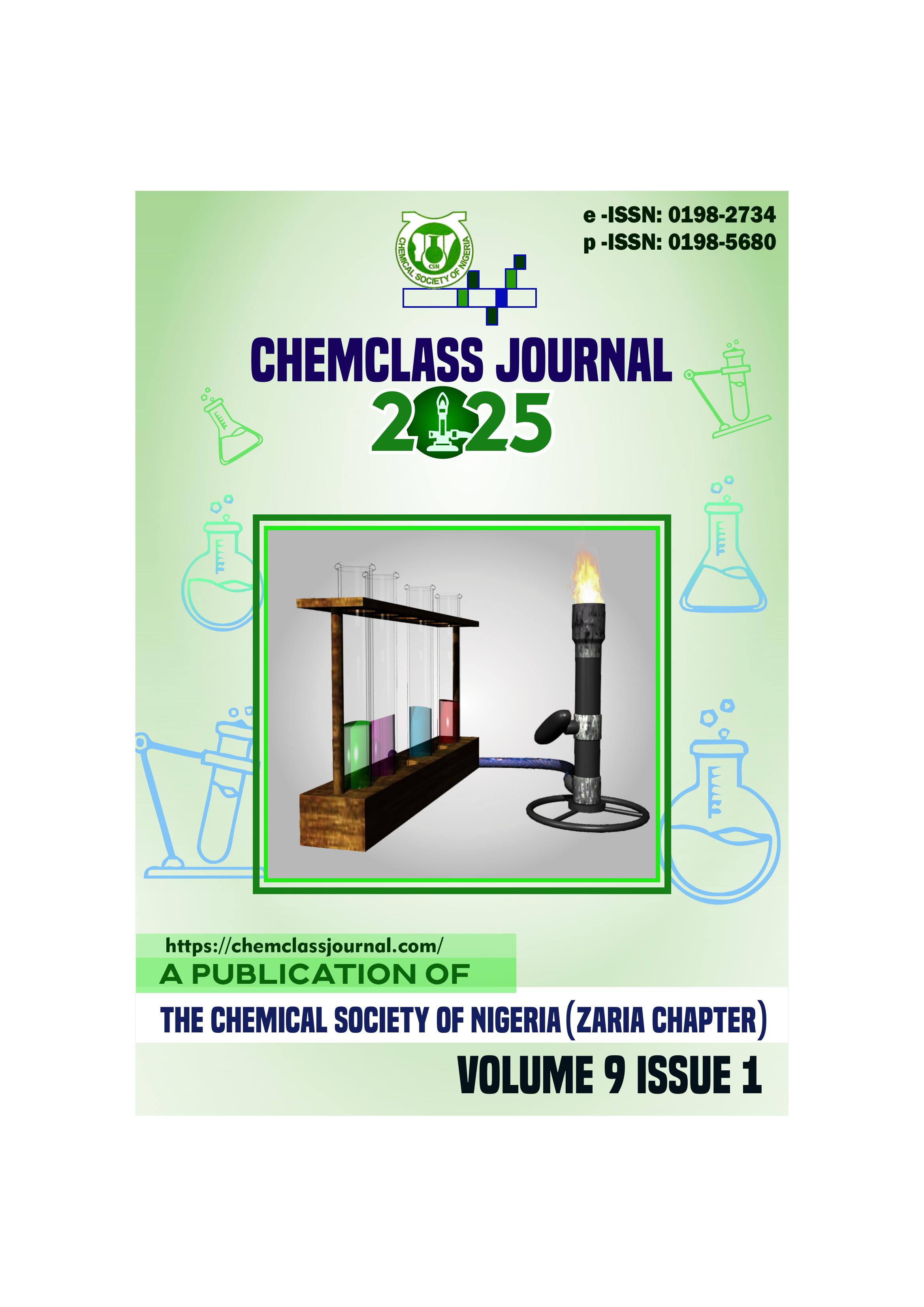Determination of Caffeine and Some Heavy Metals in Energy Drinks
DOI:
https://doi.org/10.33003/chemclas_2025_0901/013Keywords:
energy drinks , caffeine , Heavy Metals, Lead , Nigeria , Public healthAbstract
The increasing popularity of energy drinks has raised concerns about their potential health risks, particularly
among young adults. Energy drinks are widely consumed globally, with a significant market share in
Nigeria. The high caffeine and sugar content of energy drinks has been linked to various health problems,
including cardiovascular disease, type 2 diabetes, and dental caries. This study aimed to determine the
caffeine content of selected energy drinks available in the Nigerian market, determine the levels of heavy
metals (lead, cadmium, mercury, and iron) in selected energy drinks, and compare the levels of caffeine
and heavy metals in energy drinks from different manufacturers. Fourteen brands of energy drinks,
including liquid and powdered forms, were randomly purchased from Katsina central market, Nigeria. The
samples were analyzed for caffeine and heavy metal content using Aqua regia digestion and vortex
mixer/sonnicator extraction methods, respectively. The caffeine and heavy metal concentrations were
determined using high-performance liquid chromatography (HPLC) and atomic absorption spectroscopy
(AAS), respectively. The results showed that caffeine concentrations ranged from 1.11 mg/L to 2487.13
mg/L, with one sample exceeding the recommended daily intake. Heavy metal concentrations were
generally within acceptable limits, although some samples contained elevated levels of lead (up to 0.209
mg/L) and cadmium (up to 0.012 mg/L). The study found significant variations in caffeine and heavy metal
concentrations across different energy drink brands. The study highlights the need for stricter regulation
and monitoring of energy drink ingredients in Nigeria, as well as consumer awareness and education on
potential health risks associated with energy drink consumption. The findings of this study contribute to the
existing literature on the safety of energy drinks and inform policy decisions on their regulation.





 ChemClass Journal
ChemClass Journal
